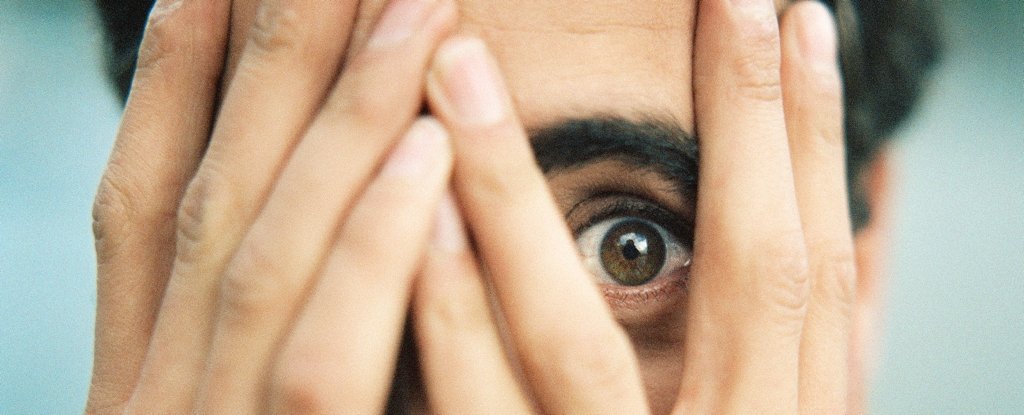Misokinesia: The Fidget-Induced Frustration Affecting Millions
Table of Contents
- 1. Misokinesia: The Fidget-Induced Frustration Affecting Millions
- 2. The Science Behind the Sensitivity
- 3. Misokinesia vs. misophonia: What’s the Difference?
- 4. Coping Strategies and Management
- 5. Looking Ahead: Future Research and Understanding
- 6. How common is misokinesia?
- 7. Interview: Exploring misokinesia with Dr. Amelia Chen
- 8. Introduction
- 9. Diving Deeper into the Science
- 10. Coping Strategies and Real-World Impact
- 11. The Future of Misokinesia Research
- 12. Concluding Thoughts
Published: April 7, 2025
By Archyde News
That person tapping their pen in a meeting. The leg bouncing incessantly on the subway. For some, these seemingly innocuous behaviors aren’t just distracting; they’re intensely irritating. This phenomenon, known as misokinesia, affects a surprising number of Americans, perhaps impacting their social lives, work performance, and overall well-being.
Why do these small, repetitive movements trigger such strong reactions? According to research, approximately one in three people experiences some degree of sensitivity to others’ fidgeting.
“[Misokinesia] is defined as a strong negative affective or emotional response to the sight of someone else’s small and repetitive movements, such as seeing someone mindlessly fidgeting with a hand or foot,”
Sumeet jaswal, University of British Columbia (2021)
While the term might be new to many, the experiance isn’t. A 2021 study led by psychologist Sumeet Jaswal at the University of British Columbia (UBC) shed light on this “under-recognized social challenge.” The researchers conducted a series of experiments with over 4,100 participants, assessing the prevalence, impact, and potential causes of misokinesia. Their findings, published in Scientific Reports, revealed that a significant portion of the population grapples with this sensitivity.
The experience of misokinesia varies. Some individuals report mild annoyance, while others experience intense anger, anxiety, or frustration. These heightened emotional responses can lead to reduced enjoyment in social situations, hinder performance in work and learning environments, and even prompt some to avoid social activities altogether.
“They are negatively impacted emotionally and experience reactions such as anger, anxiety, or frustration as well as reduced enjoyment in social situations, work, and learning environments,”
Todd Handy, UBC Psychologist
For example, consider the open-plan office surroundings, a staple in many U.S. companies. While designed to foster collaboration, these spaces can be a minefield for individuals with misokinesia. The constant visual stimuli of colleagues fidgeting can create a persistent state of unease and hinder concentration, impacting productivity and job satisfaction.
The Science Behind the Sensitivity
researchers are still working to understand the underlying mechanisms of misokinesia. Early investigations explored whether heightened visual attention played a role, suggesting that individuals with misokinesia might be less able to filter out distracting visual stimuli. However, initial findings were inconclusive.
One promising avenue of exploration involves mirror neurons, which activate both when we perform an action and when we observe someone else performing that action.
“One possibility we want to explore is that their ‘mirror neurons’ are at play,”
Sumeet Jaswal, UBC
Mirror neurons could explain why seeing someone fidget triggers a negative emotional response in individuals with misokinesia. Its hypothesized that they might unconsciously empathize with the underlying anxiety or nervousness causing the fidgeting, leading to a mirroring of those feelings.
“A reason that people fidget is because they’re anxious or nervous so when individuals who suffer from misokinesia see someone fidgeting, they may mirror it and feel anxious or nervous as well,”
Sumeet Jaswal, UBC
This mirroring effect could be particularly relevant in today’s high-stress environment.With increasing pressures in the workplace and at home, anxiety levels are rising, potentially leading to more fidgeting and, consequently, more triggers for individuals with misokinesia.
Misokinesia vs. misophonia: What’s the Difference?
Misokinesia is often compared to misophonia, a condition characterized by sensitivity to specific sounds.While both involve aversive reactions to external stimuli, they differ in their triggers. Misokinesia is specifically triggered by visual stimuli (fidgeting), while misophonia is triggered by auditory stimuli (e.g., chewing, sniffing). However,the analysis from the 2021 study showed that they can sometimes occur together.
| Condition | Trigger | Typical Response |
|---|---|---|
| Misokinesia | Visual: Fidgeting, repetitive movements | Irritation, anger, anxiety, frustration |
| Misophonia | auditory: Chewing, sniffing, throat clearing | Irritation, anger, disgust, panic |
Coping Strategies and Management
While there’s no known “cure” for misokinesia, several coping strategies can help manage its impact:
- Awareness and Dialogue: Openly communicate your sensitivity to fidgeting with friends, family, and colleagues.This awareness can lead to more considerate behavior and a more understanding environment.
- Environmental Modifications: In situations where fidgeting is likely (e.g., meetings, classrooms), strategically position yourself to minimize visual exposure. For example, sit at the front of the room or focus on a fixed point.
- mindfulness and Relaxation Techniques: Practice mindfulness exercises or relaxation techniques like deep breathing to manage the anxiety and frustration triggered by fidgeting.
- Therapy: Cognitive Behavioral Therapy (CBT) can help individuals develop coping mechanisms and reframe their negative thoughts and emotional responses to fidgeting.
The rise of remote work options in many U.S. companies has also provided a potential benefit for those with significant sensitivities. The ability to control one’s immediate environment can reduce exposure to triggers and improve overall well-being.
Looking Ahead: Future Research and Understanding
Research on misokinesia is still in its early stages, but ongoing investigations promise to deepen our understanding of this phenomenon. Future studies could explore the role of specific brain regions involved in emotional processing and visual attention, as well as the genetic and environmental factors that contribute to misokinesia sensitivity.
ultimately, increased awareness and understanding of misokinesia can help reduce the stigma associated with this condition and foster more compassionate and supportive environments for those who experience it.
“To those who are suffering from misokinesia, you are not alone,”
Todd Handy, UBC Psychologist
Your challenge is common and it’s real.”
How common is misokinesia?
Interview: Exploring misokinesia with Dr. Amelia Chen
Published: April 7, 2025
By Archyde News
Introduction
archyde News Editor: Welcome, Dr. Chen, and thank you for joining us today to discuss misokinesia. For our readers unfamiliar with the term,could you briefly explain what misokinesia is?
dr. Amelia Chen, Leading Researcher in Sensory Sensitivities: Thank you for having me. Misokinesia is a strong negative emotional response — things like anger, frustration, or anxiety — triggered by seeing someone else’s repetitive, small movements. Think fidgeting, tapping, or bouncing a leg. It’s a visual sensitivity that can significantly impact daily life.
Diving Deeper into the Science
Archyde News Editor: The research cited in our article mentions the role of mirror neurons. Could you elaborate on how mirror neurons might contribute to the experience of misokinesia?
Dr. Chen: Absolutely.mirror neurons fire both when we perform an action and when we observe someone else performing that action. The hypothesis is that in individuals with misokinesia, these mirror neurons might be overactive or misinterpreting the signals. When they witness someone fidgeting, they might unconsciously ‘mirror’ the underlying anxiety or nervousness that’s causing the fidgeting, leading to that negative emotional response.
Archyde News Editor: That’s fascinating. The article also mentions the difference between misokinesia and misophonia. Could you clarify the key distinction for our readers?
Dr. Chen: Certainly. Both are characterized by aversive reactions to external stimuli. However, misokinesia is triggered by visual stimuli – fidgeting, tapping, and other repetitive movements. Misophonia, on the other hand, is triggered by auditory stimuli – things like chewing or sniffing. While related, they are distinct experiences, though studies have shown they can sometimes co-occur.
Coping Strategies and Real-World Impact
Archyde News Editor: The article outlined several coping strategies. Are there any that you find notably effective, and do you have any advice for readers struggling with misokinesia?
Dr. Chen: Awareness and open interaction are crucial. Talking about your sensitivity with friends, family, and colleagues can create a more supportive habitat.Environmental modifications, like strategically positioning yourself in meetings, can also reduce visual exposure to fidgeting. also, mindfulness and relaxation techniques can be beneficial. For those really struggling, Cognitive Behavioral Therapy (CBT) offers valuable coping tools. I would urge readers to connect with people who understand the experience. You’re not alone.
Archyde News Editor: The article points out how open-plan offices can amplify the issue, and how working remotely can help. Do you see those types of environments impacting workplace design and job satisfaction?
Dr. Chen: Absolutely. We’re likely to see a shift. Employers need to be aware of this issue and create environments that accommodate different needs. Providing quiet spaces for focus, offering flexible work arrangements like remote work, and generally fostering a culture of understanding will be crucial for employee well-being and productivity. Design plays a big role; fewer visual distractions are a must.
The Future of Misokinesia Research
Archyde News Editor: What are the most promising avenues of future research in this area?
Dr. Chen: We need to explore the brain regions involved in visual attention, emotional processing, and the mirror neuron system. Genetic and environmental factors that contribute to the sensitivity are also key areas. Better diagnostics and targeted therapies are the ultimate goals.
Archyde News Editor: based on your extensive research, what is a key message you want our readers to take away regarding misokinesia?
Dr. Chen: The most crucial thing is awareness, the next, compassion. Misokinesia is far more common than most people realize. If you experience it, know that it’s a real phenomenon, and you’re not alone.If you know someone who experiences it, practice understanding and kindness. It is manageable, and with awareness and support, those affected can live full lives.
Concluding Thoughts
Archyde News Editor: Thank you so much, Dr. Chen, for sharing your insights.This has been incredibly informative.
Dr. Chen: my pleasure. Thank you for the opportunity to discuss this important topic.
Archyde News Editor: This article is a start, but many articles are coming. To our readers, what coping mechanisms have you found most effective and do you have any questions about misokinesia? share your experiences in the comments below.







